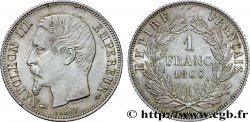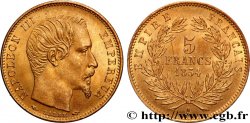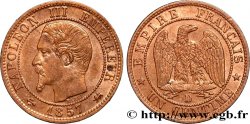fme_412577 - SECOND EMPIRE Médaille, Paix de Villa-Franca
Not available.
Item sold on our e-shop (2019)
Price : 100.00 €
Item sold on our e-shop (2019)
Price : 100.00 €
Type : Médaille, Paix de Villa-Franca
Date: 1859
Mint name / Town : France et Italie
Metal : tin
Diameter : 50,5 mm
Orientation dies : 12 h.
Engraver CAQUÉ Armand Auguste (1795-1881)
Weight : 46 g.
Edge : lisse
Puncheon : sans poinçon
Coments on the condition:
Superbe médaille avec de beaux reliefs et un bel aspect
Obverse
Obverse legend : NAPOLÉON III - EMPEREUR.
Obverse description : Tête laurée à gauche de Napoléon III.
Reverse
Reverse legend : ENTRÉE TRIOMPHALE DE L’ARMÉE ITALIENNE À PARIS LE 14 AOÛT // DÉPART / DE NAPOLÉON III / LE 10 MAI / ENTRÉE À MILAN / LE 6 JUIN / ENTREVUE / DES DEUX EMPEREURS / ET PAIX / DE VILLA-FRANCA / 11 ET 12 JUILLET / 1859.
Reverse description : Légende circulaire autour d’une couronne végétale rubanée et en onze lignes horizontales.
Commentary
L’armistice et les préliminaires de Villa-franca ont été signés le 11 juillet 1859 à Villafranca di Verona, en Vénétie, par la France et l’Autriche. Il met fin à la guerre austro-franco-sarde qui constitue pour l’Italie, la deuxième guerre d'indépendance italienne.
Après les difficiles batailles de Magenta (4 juin) et de Solférino (24 juin), Napoléon III, sans consulter son allié sarde Cavour, propose l’armistice le 8 juillet et une entrevue le 11 juillet à l’empereur d'Autriche François-Joseph Ier. Bien que victorieux, Napoléon III est effrayé par l’hécatombe (près de 40 000 tués ou blessés à Solférino) et l’idée de devoir continuer une campagne d'automne et d’hiver contre les Autrichiens retranchés dans le quadrilatère. De plus, le gouvernement et l’impératrice lui transmettent des informations alarmantes sur l’état de l’opinion française, qui est exécrable. En particulier, les catholiques, jusqu’alors soutien du régime impérial, craignent pour les États pontificaux et l’indépendance du pape si l’Autriche était éliminée d’Italie. Enfin, un sentiment anti-français se répand en Allemagne, où on soutient les Autrichiens. La Prusse masse près de 400 000 soldats près du Rhin, dégarni de troupes françaises.
À Villafranca, il est convenu que l’Autriche cède la Lombardie (Mantoue et Peschiera exceptées) à la France, qui la redonne au royaume de Piémont-Sardaigne. Une confédération italienne présidée par le pape Pie IX est créée, la Vénétie sous souveraineté autrichienne en fera partie. Les ducs de Modène, de Parme et de Toscane, chassés par des révolutions, retrouvent leurs trônes.
Cavour, non consulté, démissionne le 10 juillet, alors que le roi Victor-Emmanuel II donne son accord « à titre personnel », laissant ainsi la porte ouverte à toute rétractation gouvernementale.
Ces préliminaires furent confirmés par le traité de Zurich du 11 novembre 1859..
Après les difficiles batailles de Magenta (4 juin) et de Solférino (24 juin), Napoléon III, sans consulter son allié sarde Cavour, propose l’armistice le 8 juillet et une entrevue le 11 juillet à l’empereur d'Autriche François-Joseph Ier. Bien que victorieux, Napoléon III est effrayé par l’hécatombe (près de 40 000 tués ou blessés à Solférino) et l’idée de devoir continuer une campagne d'automne et d’hiver contre les Autrichiens retranchés dans le quadrilatère. De plus, le gouvernement et l’impératrice lui transmettent des informations alarmantes sur l’état de l’opinion française, qui est exécrable. En particulier, les catholiques, jusqu’alors soutien du régime impérial, craignent pour les États pontificaux et l’indépendance du pape si l’Autriche était éliminée d’Italie. Enfin, un sentiment anti-français se répand en Allemagne, où on soutient les Autrichiens. La Prusse masse près de 400 000 soldats près du Rhin, dégarni de troupes françaises.
À Villafranca, il est convenu que l’Autriche cède la Lombardie (Mantoue et Peschiera exceptées) à la France, qui la redonne au royaume de Piémont-Sardaigne. Une confédération italienne présidée par le pape Pie IX est créée, la Vénétie sous souveraineté autrichienne en fera partie. Les ducs de Modène, de Parme et de Toscane, chassés par des révolutions, retrouvent leurs trônes.
Cavour, non consulté, démissionne le 10 juillet, alors que le roi Victor-Emmanuel II donne son accord « à titre personnel », laissant ainsi la porte ouverte à toute rétractation gouvernementale.
Ces préliminaires furent confirmés par le traité de Zurich du 11 novembre 1859..







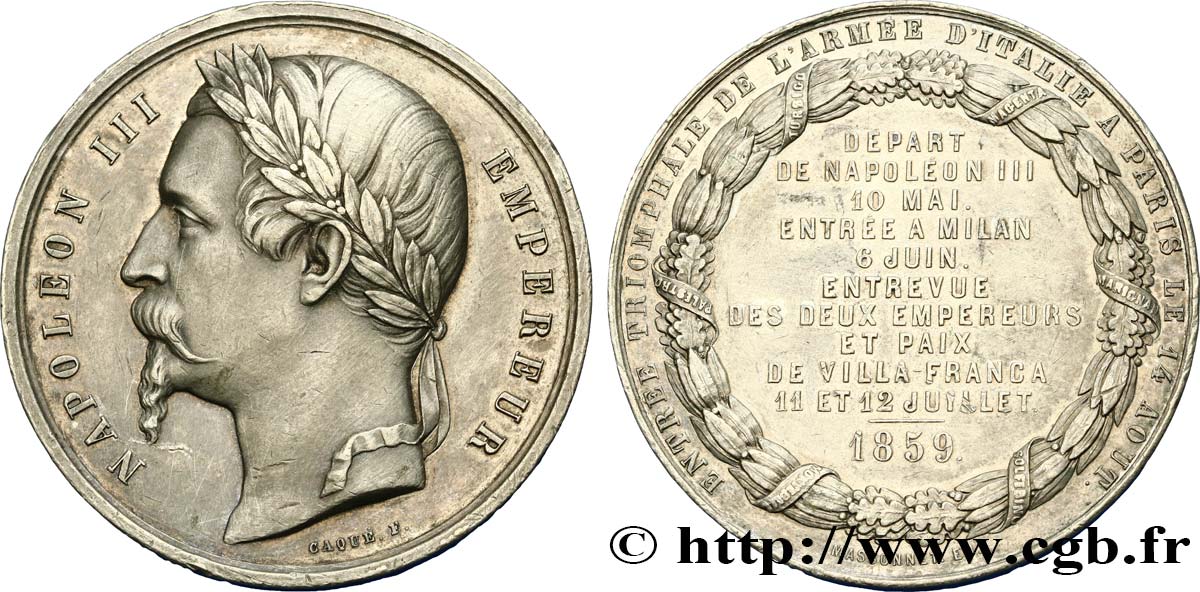
 Report a mistake
Report a mistake Print the page
Print the page Share my selection
Share my selection Ask a question
Ask a question Consign / sell
Consign / sell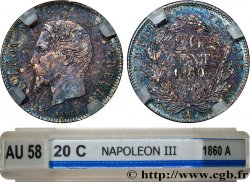
 Full data
Full data
